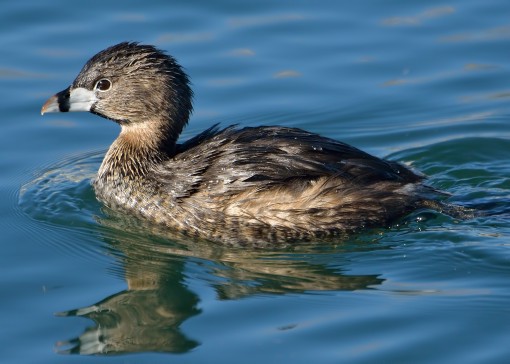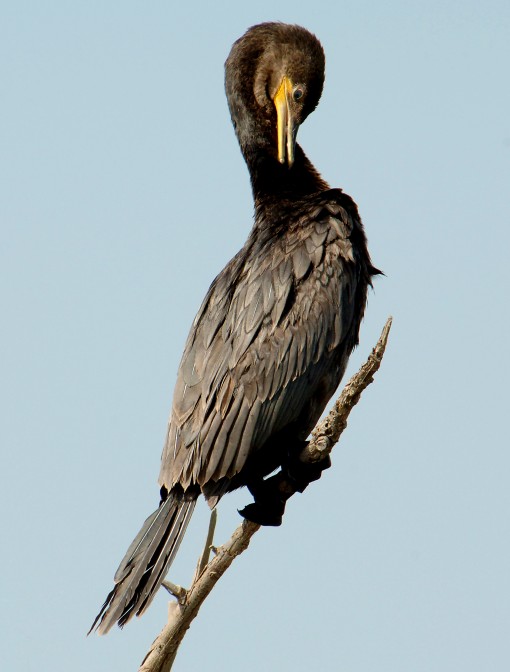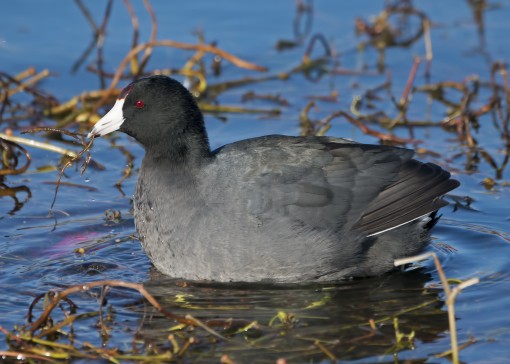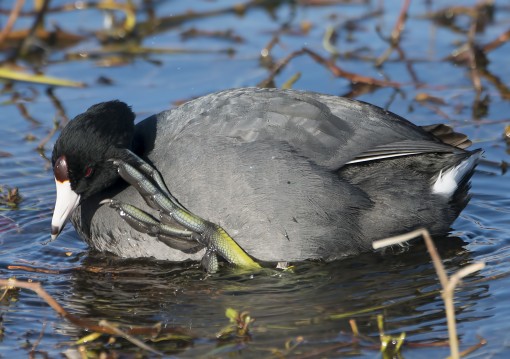No Quack, No Waddle, No Duck
February 2, 2014 | By Shoal Creek Conservancy
This blog post was written by Ted Lee Eubanks. To learn more about the author, please visit this site.

If a bird waddles like a duck, and quacks like a duck, it’s a duck, right? Not every bird paddling around Lady Bird Lake or Shoal Creek quacks or waddles, though. If a waterbird isn’t a duck, what is it?
Let’s look at three of the most common waterbirds in our area that aren’t ducks (or geese, for that matter). The first is the pied-billed grebe. “Pied” means having more than one color, usually black and white. Grebes are members of the Podicipediformes order, a widely distributed order of freshwater diving birds. The pied-billed is our resident grebe, although the least grebe of South Texas can been seen here infrequently. Eared grebes winter here, although I rarely seen them on Lady Bird Lake or around the mouth of Shoal Creek. Incredible as it may seem, grebes are now thought to be most closely related to the flamingos!

Two species of cormorants winter in our area of Central Texas. The neotropic, the cormorant of the Texas coast, winters here in small numbers. The common cormorant is the double-crested. Cormorants feed on fish in immense rafts of birds. They are often seen massing with ring-billed gulls around Tom Miller Dam. Double-crested cormorants are seen in early morning and late evening flying over Lady Bird Lake in v-shaped flocks that resemble geese (which they are often mistaken for).

Our final waterbird is the American coot. Coots are quarrelsome, and I suspect that the name “old coot” came from the ill-tempered disposition of these birds. Coots are strictly vegetarian, and they eat the hydrilla that Austin spends so much time and effort trying to eradicate. Unlike the webbed feet of ducks, coots have broad, lobed scales on their lower legs and toes that fold back with each step in order to facilitate walking on dry land. Check out the size of these feet!

